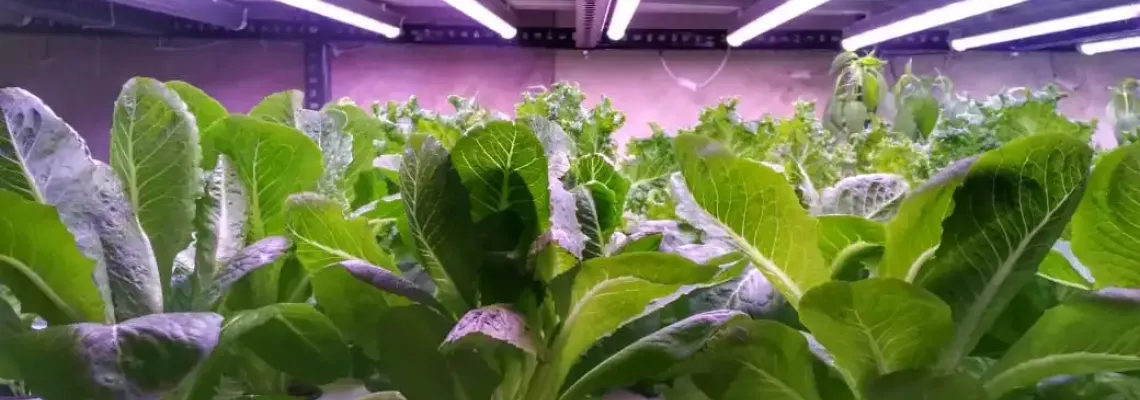
In today’s horticulture, lighting has evolved from a basic necessity into a powerful tool for precision farming. With advancements in LED grow lighting, the concept of “light recipes” has emerged, tailored lighting strategies that cater to the unique growth requirements of specific crops. By adjusting spectrum, intensity, and duration, growers can optimize plant health, boost yields, and enhance quality.
For crops like lettuce, a cooler, blue-dominant spectrum promotes compact growth and vibrant leaves. Tomatoes thrive under a balanced red-blue spectrum with added far-red light to encourage flowering and fruit development. Cannabis, being a light-sensitive, high-value crop, benefits from carefully tuned spectrums across its vegetative and flowering stages to maximize potency, terpene profiles, and bud size.
Light recipes offer growers the flexibility to replicate natural conditions, accelerate growth cycles, and improve resource efficiency. They also enable indoor farms and greenhouses to produce consistent results year-round, regardless of external weather or seasonal changes.
In this guide, we’ll break down how light recipes work, why they’re essential for modern horticulture, and practical tips for designing optimal lighting setups for lettuce, tomatoes, and cannabis cultivation, helping you unlock your crops’ full potential.
What Are “Light Recipes” in Horticulture?
A light recipe is essentially a customized lighting plan for plants, taking into account:
Light spectrum: The combination of wavelengths (colors) that plants receive.
Light intensity (PPFD): The amount of light delivered per square meter per second.
Photoperiod: The number of hours of light is provided each day.
Light distribution: How evenly is light spread across the crop canopy?
With LED technology, growers are no longer locked into one-size-fits-all lighting. They can program fixtures to produce specific colors of light blue, red, far-red, green, or even UV, depending on the crop and growth stage.
Why Light Recipes Matter
Each plant species and even different growth phases within the same plant respond differently to light. For example:
Lettuce thrives with higher blue light ratios, which encourage compact growth and deeper color.
Tomatoes benefit from a balanced mix of red and far-red light for flowering and fruiting.
Cannabis responds well to fine-tuned blue-red ratios for vegetative and flowering stages, and UV light can enhance resin and terpene production.
Custom light recipes allow growers to:
Maximize yield by giving plants exactly what they need at each stage.
Improve quality—better flavor, color, texture, and nutrient content.
Reduce waste—no excess energy spent on unnecessary wavelengths.
Shorten growth cycles to increase production capacity.
Light Recipes for Lettuce
Lettuce Growth Priorities: Crisp texture, deep green color, and uniform leaf development.
Optimal Spectrum: High blue light content (20–30% of total light) supports compact, strong leaves. Blue light stimulates chlorophyll production and reduces stretching.
Supplementary Red Light: Ensures energy for photosynthesis while preventing elongated stems.
Light Intensity (PPFD): Around 150–200 µmol/m²/s for indoor vertical farming; slightly higher in greenhouses.
Photoperiod: 14–16 hours/day for optimal growth.
Example Light Recipe:
Blue: 25%
Red: 65%
Green: 5%
Far-Red: 5%
Tip: Avoid excessive far-red light, as it can cause stretching and reduce leaf density in lettuce.
Light Recipes for Tomatoes
Tomato Growth Priorities: High yield, strong flowering, large fruit size, and rich color.
Optimal Spectrum: A balanced red-blue ratio is crucial, with a boost of far-red light during flowering to enhance fruit set.
Blue Light Role: Supports vegetative growth and prevents overly tall plants.
Red Light Role: Drives photosynthesis and encourages flowering.
Far-Red Light Role: Promotes shade-avoidance response, helping flowering and fruit expansion.
Light Intensity (PPFD):
Vegetative: 250–350 µmol/m²/s
Flowering/Fruiting: 400–600 µmol/m²/s
Photoperiod: 16–18 hours/day (vegetative), 12–14 hours/day (flowering).
Example Light Recipe:
Blue: 15%
Red: 70%
Green: 5%
Far-Red: 10%
Tip: Increasing far-red light for short periods during flowering can improve tomato yield without sacrificing plant structure.
Light Recipes for Cannabis
Cannabis Growth Priorities: Dense buds, high cannabinoid content, rich terpene profile, and consistent yields.
Optimal Spectrum: High blue light during the vegetative stage to maintain compact growth; red-dominant light during flowering to boost bud production.
UV Light Role: UV-A and UV-B exposure in moderation can stimulate resin production and increase cannabinoid potency.
Far-Red Light Role: Helps with flowering transition and may enhance bud size.
Light Intensity (PPFD):
Vegetative: 400–600 µmol/m²/s
Flowering: 800–1,000 µmol/m²/s (with supplemental CO₂ for best results).
Photoperiod:
Vegetative: 18–20 hours/day
Flowering: 12 hours/day
Example Light Recipe (Vegetative):
Blue: 25%
Red: 60%
Green: 5%
Far-Red: 5%
UV: 5%
Example Light Recipe (Flowering):
Blue: 15%
Red: 70%
Green: 5%
Far-Red: 7%
UV: 3%
Tip: Introduce UV gradually to avoid plant stress, and keep UV exposure limited to a few hours daily during the flowering phase.
Key Considerations for Implementing Light Recipes
Measure, Don’t Guess – Use a quantum sensor or spectrometer to ensure the actual light spectrum matches your intended recipe.
Adjust for Growth Stage – Dynamic spectrum control allows you to change recipes between vegetative, flowering, and finishing stages.
Watch the Heat – While LEDs produce less heat than HPS, certain wavelengths can still affect canopy temperature.
Factor in the Environment – Humidity, temperature, and CO₂ levels all interact with light to influence growth.
Energy Efficiency – Optimizing light recipes can reduce wasted energy by eliminating unnecessary wavelengths.
The Future of Light Recipes in Horticulture
As AI and IoT technologies become integrated into horticulture, automated spectrum control is emerging. Systems can monitor plant responses in real time and adjust lighting recipes accordingly. Machine learning algorithms may soon be able to predict exactly how a plant will respond to different spectra, making crop-specific lighting even more precise.
For crops like lettuce, tomatoes, and cannabis where yield, quality, and appearance are critical this level of customization could transform profitability and sustainability.
Conclusion
Light recipes are revolutionizing controlled-environment agriculture. By tailoring light to the specific needs of lettuce, tomatoes, and cannabis, growers can enhance productivity, quality, and efficiency while conserving resources.
In a future where every photon counts, understanding and applying crop-specific light recipes won’t just be an advantage; it will be essential for staying competitive in the horticulture industry.

2 Comment(s)
1
1
1
Leave a Comment